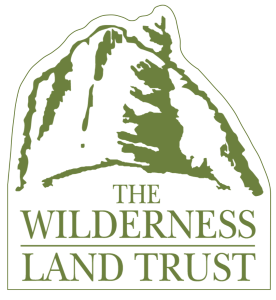Finding the Answers at Little Castle Lake
“Buying the land is just the first step in a long, costly process when it comes to wilderness conservation.”
-Aimee Rutledge, Vice President and Senior Lands Specialist
Renee Casterline slowly climbed over the last peak of the Little Castle Lake trail, stood atop Bradley Ridge and gazed out over the small alpine lake. The Siskiyou County native had been hiking this trail and others around it most of her life, but on this day, she had a question for the mountain top.
Renee, who serves as the executive director for the Siskiyou Land Trust, isn’t the first to bring life decisions to the hillsides surrounding Mt. Shasta. The vast rocky peaks and forested valleys that make up the Castle Crags Wilderness in California attract thousands of California natives and others every year. Most of these visitors are drawn to the promise of pristine hiking trails, crisp, clear alpine lakes and rock climbing, all within easy access from well-maintained roads.
But some, like Renee, find space in this wilderness to meditate on personal growth, life purpose or to contemplate big decisions. Mt. Shasta and the surrounding peaks and valleys of the Castle Crags Wilderness is said to be a place where those seeking spiritual guidance gather.
“I was born in Mt. Shasta and have lived most of my life here, so this is the backyard I come to occasionally,” says Renee. “There are so many ways to interact with this space, and to be out here in nature. Over the years I have been here at different turning points in my life to get clarity around what I want to do. This is a big part of my experience with this place, coming to it in times when I’m really trying to find direction.”
Towering granite spires, steep canyons, old-growth forests, alpine lakes, and more than 300 species of wildflowers await those who wish to explore the Castle Crags Wilderness. Located within the wilderness boundary are several small glacial lakes, including Castle Lake, Heart Lake and the beautiful Little Castle Lake at the head of Ney Springs Canyon. Little Castle Creek feeds one of the most important sources of clean water in California and the West — the Sacramento-San Joaquin River Delta.
Buzz Knight came to the area in summer 1973 to visit some family and never left. “I climbed the mountain five times that summer and I was hooked,” says Buzz. Since that time, he’s watched his kids grow up swimming, hiking and skiing in and around the Castle Lake area and he now spends much of his time there with his grandkids. “I really love swimming up there. Floating around in Heart Lake can’t be beat. The water is so clear and there’s a nice hot rock to lay on when you get out. It’s just a beautiful spot, and it’s accessible.”
It’s no wonder that when a privately owned 637-acre parcel of land within this wilderness came up for auction recently, it sent shock waves through the Mt. Shasta community and beyond. Selling it to another private party opened it up to development and the very real possibility that a portion of Castle Lake, the Heart Lake Trail and all of Little Castle Lake would be closed off to the public.
“When the auction was announced, we didn’t have the resources to respond,” says Renee. “Reaching out to the Wilderness Land Trust, an organization that has the expertise, staffing and resources to respond was critical for us. It also helped our community realize that there are different organizations in the conservation world. If we can’t meet a need, we can develop partnerships to get the job done.”
In spring 2019, The Wilderness Land Trust’s offer to purchase the Little Castle Lake property was accepted and the Trust partnered with the Siskiyou Land Trust to begin raising the funds needed to cover the cost of holding and managing the land until it could eventually be turned over to the public as part of the Castle Crags Wilderness. The purchase builds on The Trust’s 2018 purchase of two square miles of land adjacent to the Wilderness. As a result of that acquisition, more than 1,250 acres will be eventually transferred to the U.S. Forest Service for inclusion in the Shasta-Trinity National Forest.
“Buying the land is just the first step in a long, costly process when it comes to wilderness conservation,” says Aimee Rutledge, vice president and senior lands specialist with The Wilderness Land Trust. “Transferring land to public ownership can take up to three years, and because this land’s value is in its standing forests, our lender requires us to pay timber insurance, which has increased dramatically due to the number of wildfires experienced in California in recent years.”
In August, the two land trusts sponsored a guided hike from Castle Lake to Heart Lake to raise awareness about the need to continue protecting the land. The event also gave the local limnology lab a chance to educate attendees on the 62-year-old habitat and water quality study that is being conducted at Castle Lake. A study that, according to water quality scientist Brooke Mejica, has drawn hundreds of children to the lake to learn about conservation.
“One of the most important things the students get out of coming here is being able to form a really intimate relationship with nature and connecting to it in a new way,” says Brooke. “It’s a connection that may live with them for the rest of their lives.”
Brooke is quick to reply when asked why that connection is so important. “So many people don’t have time for nature, but the people who developed that relationship early in their lives tend to be the ones who are making changes for the environment. People who become conservationists or work as a scientist trying to understand climate change for example. Their choices tend to stem from that original connection with nature. The work we are doing at our Castle Lake research station is really important for our younger generation because opportunities for hands on experience have become rarer.”
But even Brooke isn’t immune to the romance and spiritual draw of the Castle Crags Wilderness. “My husband proposed to me at Heart Lake, so that is a very special place to me.” Now Brooke’s children spend their summers swimming in Castle Lake and their winters ice skating across its pristine surface.
And what about the question Renee brought to the mountainside years ago?
“I was at a real turning point in my life, unsure which direction to go. Did I want to get married? Did I want to be a married person? I’d landed on a yes while standing up there, so I made this mental list of who I wanted to find and turned it loose into the wind.” Renee smiled sheepishly at the memory. “It’s ironic, because soon after, I met the man who became my husband and he pretty much fulfilled that list. And one of the first places we went hiking together was on Bradley Ridge.”
Ironic? Perhaps.
Sign up to receive more stories like this.
See the full interview with Renee Casterline below:


